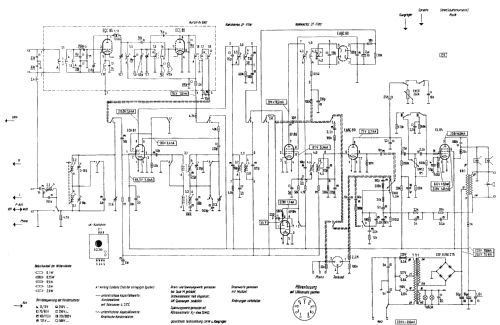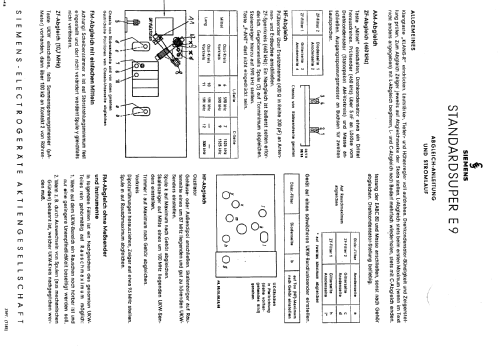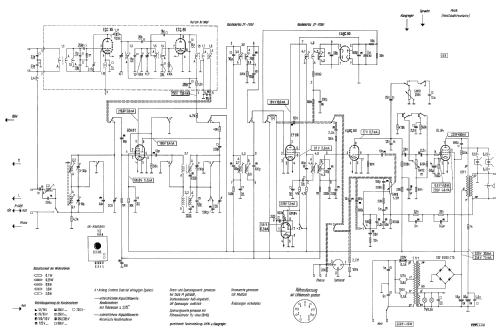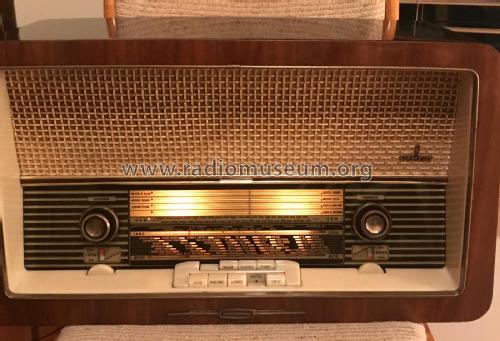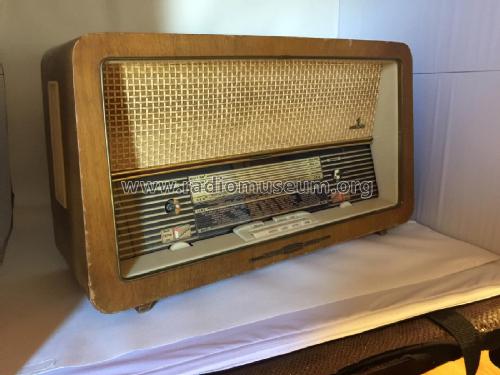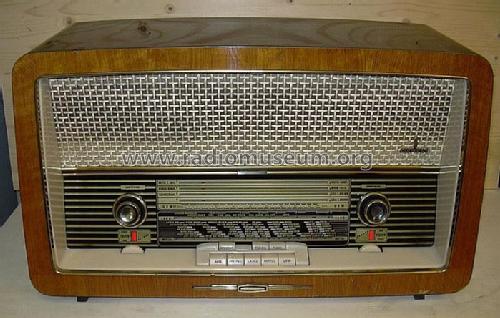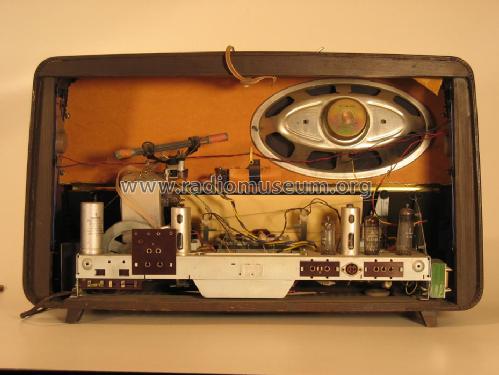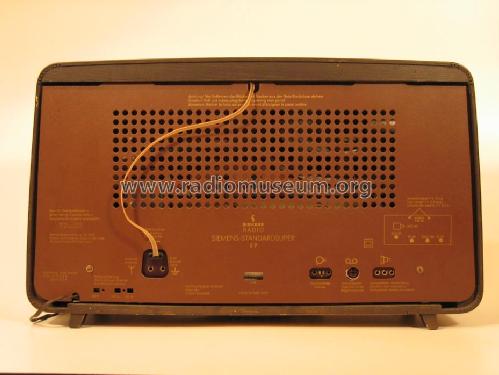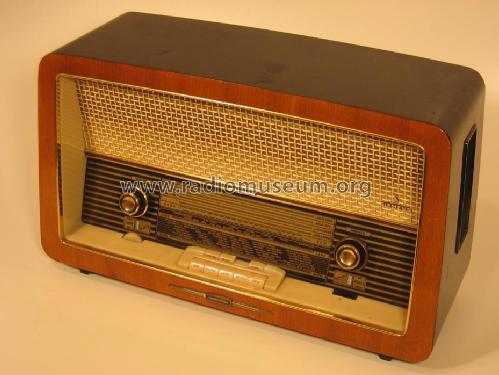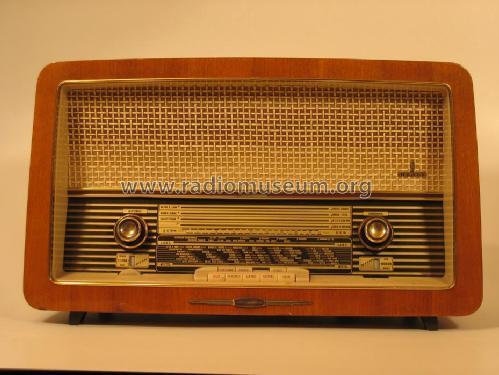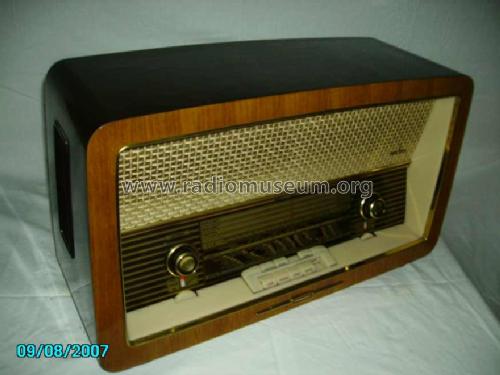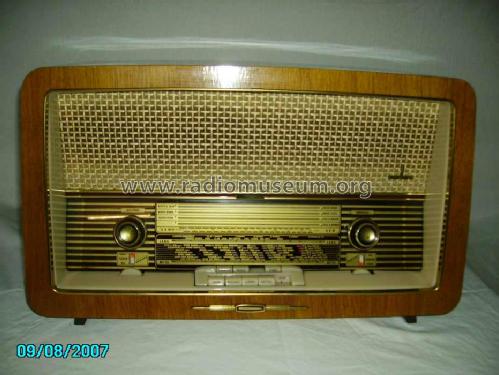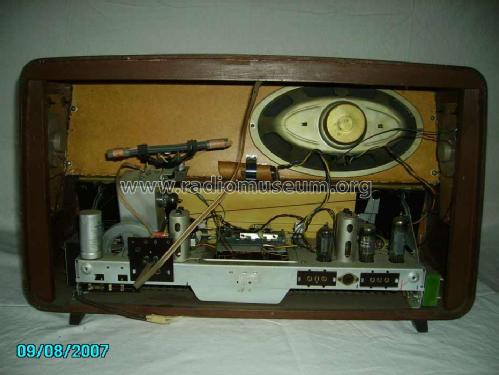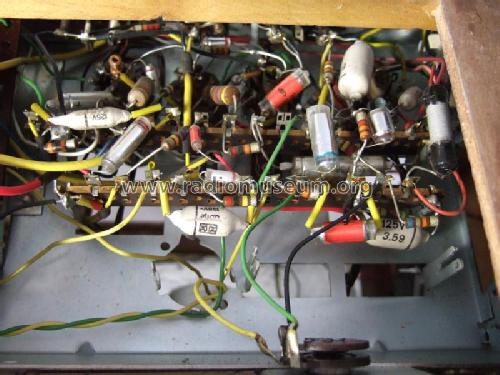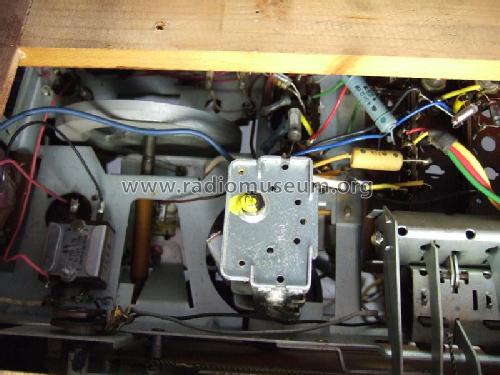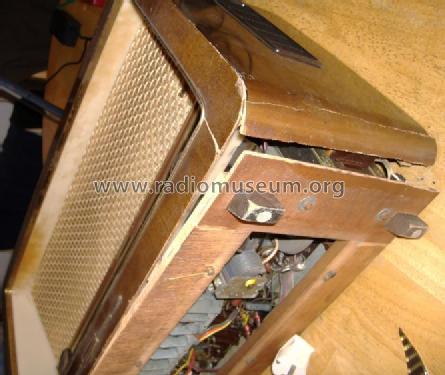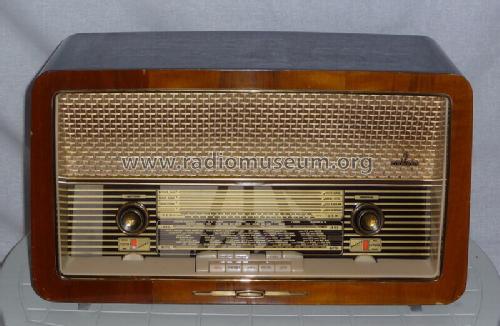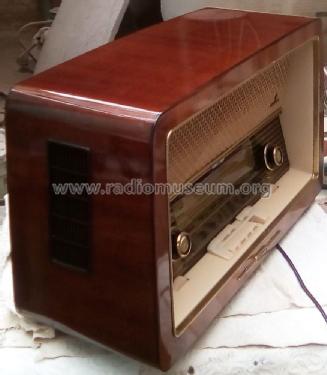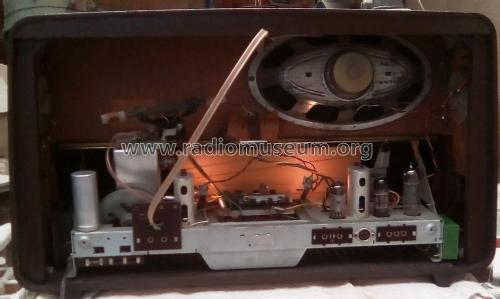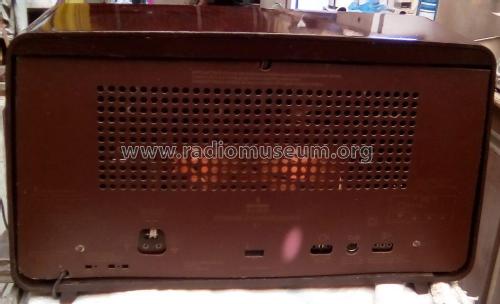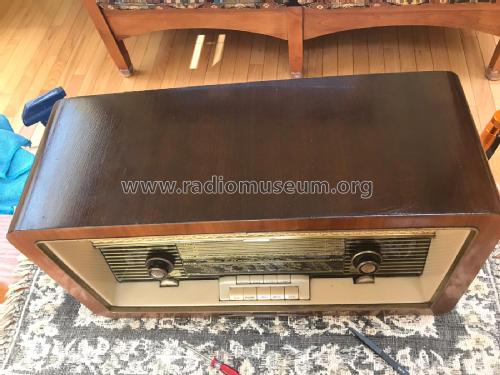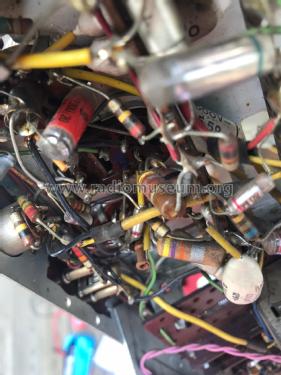- Pays
- Allemagne
- Fabricant / Marque
- Siemens (& Halske, -Schuckert Werke SSW, Electrogeräte); Berlin, München
- Année
- 1959/1960
- Catégorie
- Radio - ou tuner d'après la guerre 1939-45
- Radiomuseum.org ID
- 22167
Cliquez sur la vignette du schéma pour le demander en tant que document gratuit.
- No. de tubes
- 6
- Principe général
- Super hétérodyne (en général); FI/IF 460/10700 kHz
- Circuits accordés
- 6 Circuits MA (AM) 10 Circuits MF (FM)
- Gammes d'ondes
- PO, GO et FM
- Tension / type courant
- Alimentation Courant Alternatif (CA) / 110; 127; 220 Volt
- Haut-parleur
- 3 HP
- Puissance de sortie
- 5 W (qualité inconnue)
- Matière
- Boitier en bois
- De Radiomuseum.org
- Modèle: Standardsuper E9 - Siemens & Halske, -Schuckert
- Forme
- Modèle de table avec boutons poussoirs.
- Dimensions (LHP)
- 600 x 350 x 210 mm / 23.6 x 13.8 x 8.3 inch
- Remarques
- abschaltbare Ferritantenne.
- Poids net
- 8 kg / 17 lb 9.9 oz (17.621 lb)
- Prix de mise sur le marché
- 289.00 DM
- Source extérieure
- Erb
- D'autres Modèles
-
Vous pourrez trouver sous ce lien 2537 modèles d'appareils, 2147 avec des images et 1347 avec des schémas.
Tous les appareils de Siemens (& Halske, -Schuckert Werke SSW, Electrogeräte); Berlin, München
Collections
Le modèle Standardsuper fait partie des collections des membres suivants.
Contributions du forum pour ce modèle: Siemens & Halske, -: Standardsuper E9
Discussions: 2 | Publications: 34
The FM or UKW band is generating a big noise and the volume goes up and down as I keep dialing...In other words the UKW is not tuning to any stations but very noisy... Any idea how to fix it.. I am new to this world of old tube radio and not sure how to find the bad capacitor that I can change to fix the problem. The long and medium waves are working fine.
David Erali, 26.Aug.18
The FM dipole is only going to pickup "E" field on MW & LW. I have read people suggesting that the FM ant switch is to "improve" AM reception. Well it does.
But not by picking up more signal from the Radio station. The Ferrite Rod is the main aerial for AM bands. The E field is very much higher at Lower frequency when it's a very short aerial in the "Near Field", this means the FM dipole will pick up very local interfence from SMPSU very well but the AM radio station will be poor reception on it.
Thus by rotation of the Ferrite Rod and trying both orientations of the dipole (to reverse phase) the local interference can be greatly reduced with perhaps just a small reduction in the desired signal. The local SMPSU Interference is greatly reduced. Presumably in 1959 the local interference would have been TV line Drive harmonics of 15.625KHz in Germany and any local motors like a fridge compressor.
Michael Watterson, 11.Jan.12
